| ||||||
| Running Time: | 5:16 | Release Date: | ||||
| Welcome to "The Tale of Cromwell's Head". In this video we recount events that occurred 350 years ago. A tale of how a newly crowned king extracted revenge on a dead man. Find out why Oliver Cromwell's head came to be buried 300 years after he died. | ||||||
About The Video |
Introduction |
We begin our story at the end. Sidney Sussex College, Cambridge England, on 25th March 1960 in a secret ceremony, a human head was buried. To find the reason for this macabre event, we have to travel back to events that occurred 350 years before.
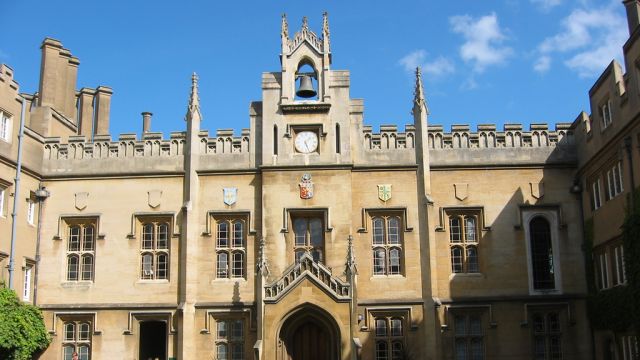
The English Civil War (1642-1651) |
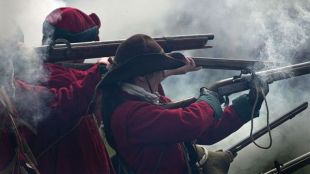
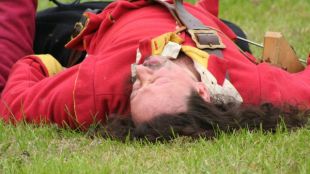
From 1642-1651, England was embroiled in a bloody civil war. On one side were the Royalists, who were led by King Charles I.
There were various factors that led to the Civil War, but predominantly it was a battle about the powers of Parliament versus the powers of the king. Charles I was an autocratic monarch, who believed in the divine right of kings. He stated that:
"Kings are not bound to give an account of their actions, but to God alone".
Charles I considered Parliament a nuisance, whose only useful function was to help him raise taxes.
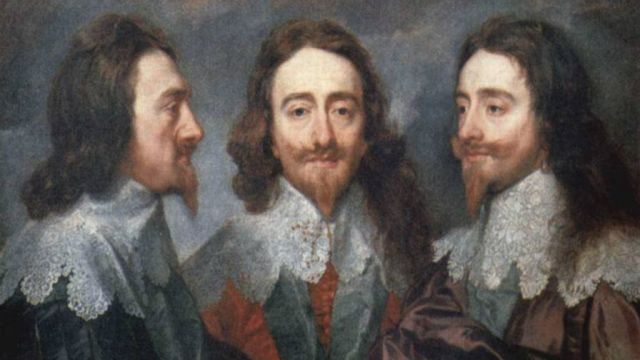
Fighting against King Charles I and the Royalists were the Parliamentary forces. Their eventual leader was Oliver Cromwell. Parliament was seeking to curtail the king's powers, and in particular to force Charles I to listen to their grievances.
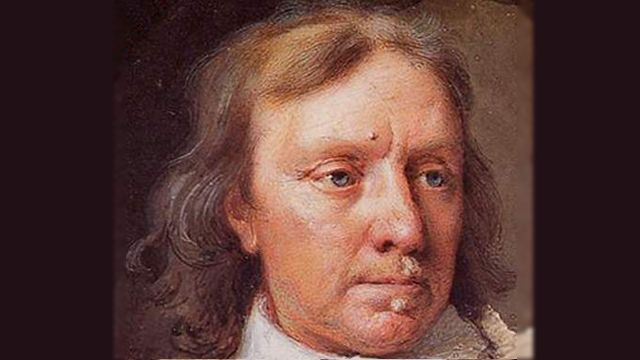
The Trial And Execution Of Charles I |
The Parliamentary army under Cromwell was an efficient and disciplined fighting unit, eventually the king was defeated and stood trial for treason.

As treason was considered an attack on the monarch and Charles I was king, parliament had difficulty finding charges, finally Charles was accused of being:
"erect and uphold in himself an unlimited and tyrannical power, to rule according to his will and to overthrow the rights and liberties of the people"
Charles refused to acknowledge the legitimacy of the court saying:
"I would know by what power I am called hither. I would know by what authority, I mean lawful"
Charles I was found guilty and the sentence of the court was:
"he, the said Charles Stuart, as a tyrant, traitor, murderer and public enemy to the good of this nation, shall be put to death by severing of his head from his body."
A death warrant was drawn up and signed by 59 judges.
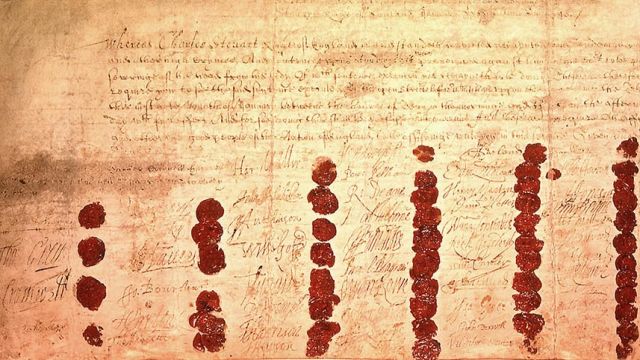
The Execution Of Charles I |
The date of execution was set as January 30th 1649. It was a bitterly cold day, Charles I was allowed a last walk in St James's park with his pet dog. The man chosen to be the executioner refused, probably fearing repercussions. Two other men were found and allowed to wear masks to hide their identity.
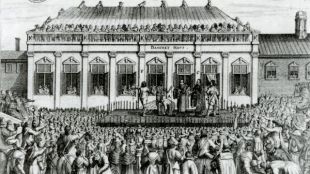
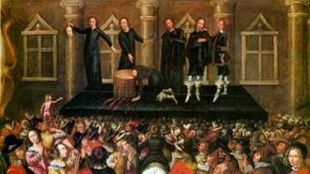
After the beheading, Charles I's head was held up to the crowd, and the following words may or may not have been spoken, "Behold, the head of a traitor!".
It is also said that spectators were allowed to dip their handkerchiefs in Charles I's blood, either as a souvenir, or as a cure for disease.

Oliver Cromwell's Death |
After the death of Charles I, the monarchy was abolished and the country became a Commonwealth. The leader of the Commonwealth and effective ruler was Oliver Cromwell, whose title was "Lord Protector". Then on September 3rd 1658, Oliver Cromwell died.
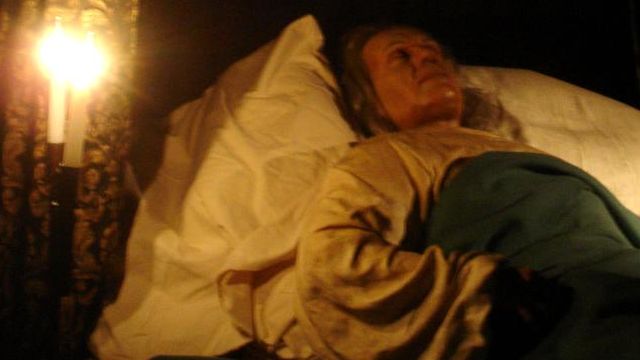
A death mask was made of Oliver Cromwell, this was quite a common occurrence in those days.
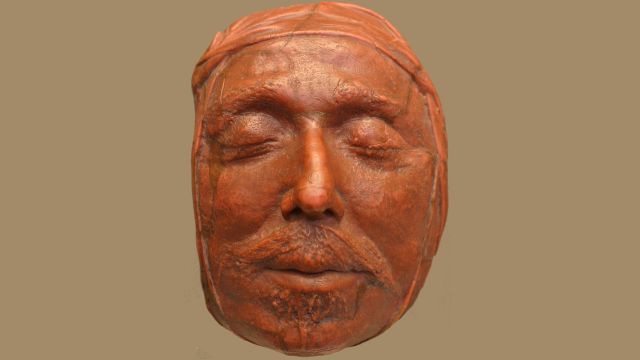
The mask was then used to make an effigy of Oliver Cromwell. It was this effigy that was used to lie in state.
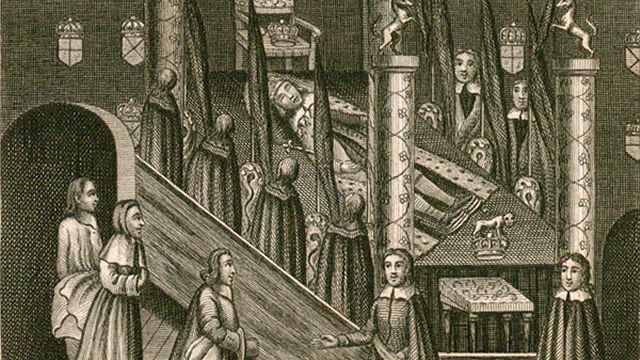
Meanwhile, Oliver Cromwell's body was secretly buried inside Westminster Abbey.
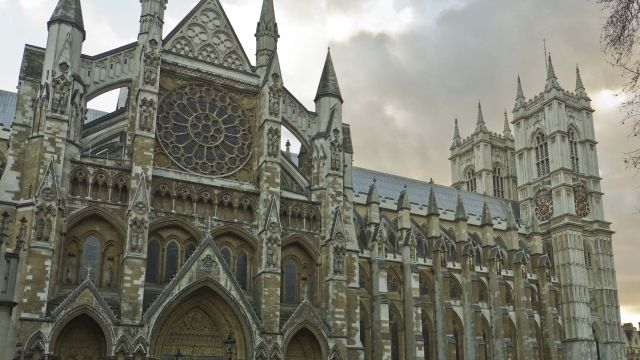
On the 23rd November 1658, there was a public funeral, again the effigy was used, as Cromwell's body had already been buried.
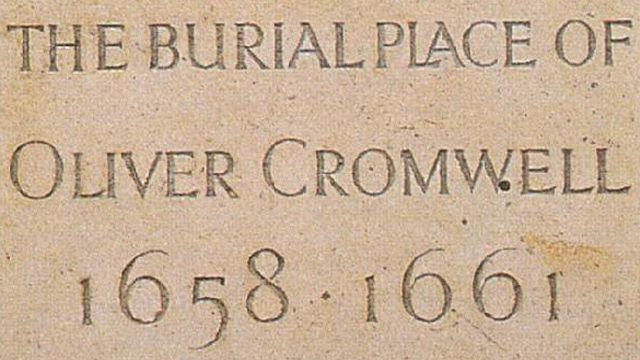
The Restoration Of The Monarchy |
Cromwell was a strong leader and his death left a vacuum. Although Oliver Cromwell's son, Richard Cromwell succeeded his father as Lord Protector, he was indecisive and only ruled nine months.
As a solution to the leadership problem, in 1660, Charles the dead king's son returned to England.
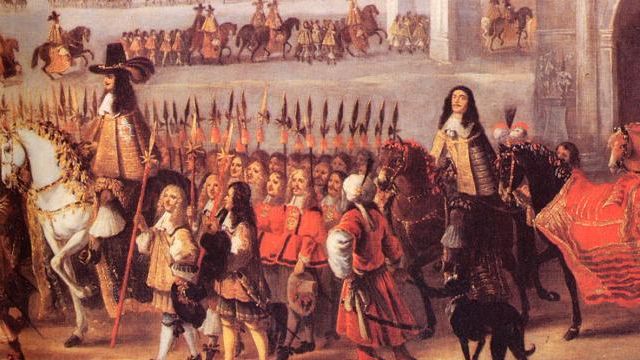
Charles II was proclaimed the new king, it was hoped that he had learnt lessons from his father's fate and would pay attention to Parliament and its wishes.
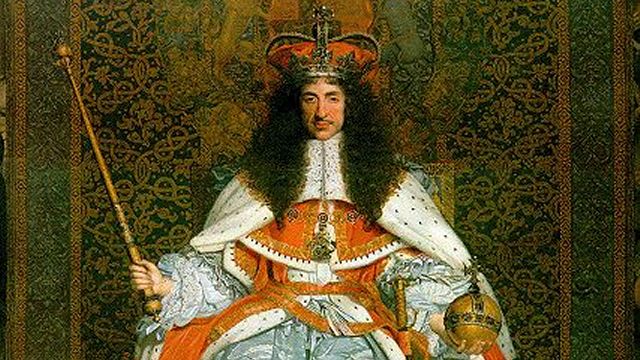
The Exhumation Of Oliver Cromwell's Body |
Charles II wanted revenge for his father's execution, and the majority of the surviving signatories of Charles I's death warrant were imprisoned or executed.
As a further act of revenge, on 30th January 1661, the 12th anniversary of Charles I's execution, Oliver Cromwell's body was dug up and then hung all day. It was then beheaded.
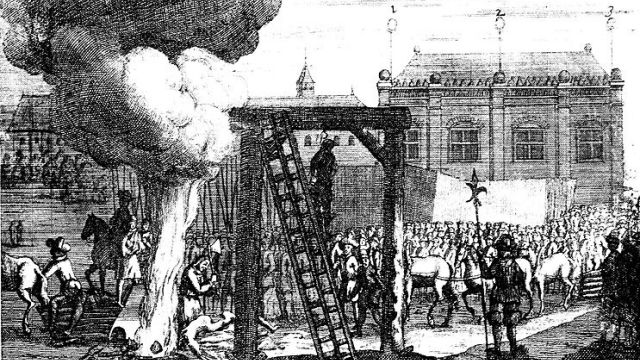
Oliver Cromwell's head was then impaled on a spike, and set on the roof of Westminster Hall.
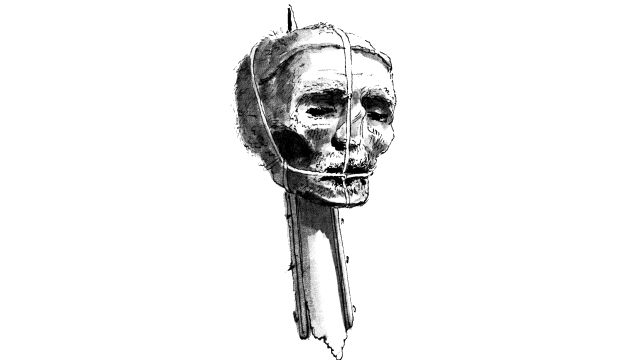
There Oliver Cromwell's head stayed for at least 25 years. Then, one day during a fierce storm it was blown down.

The head was then found by a soldier, who took it home. When it was noticed that Oliver Cromwell's head was missing there was a search, and Cromwellian sympathizers were suspected. Oliver Cromwell's head was a dangerous item to be in possession of, so it is presumed that the soldier hid it and kept quiet.
The Head Is Exhibited |
Then in 1710, Oliver Cromwell's head reappeared, and was exhibited for money.
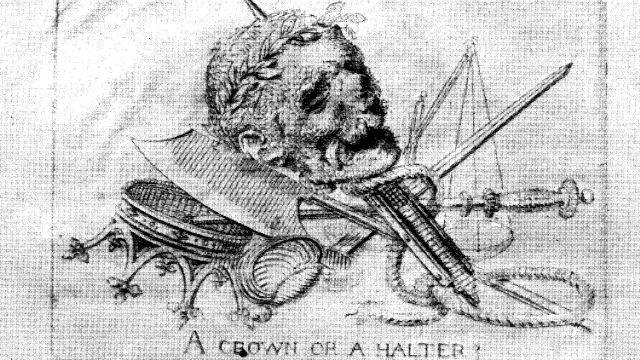
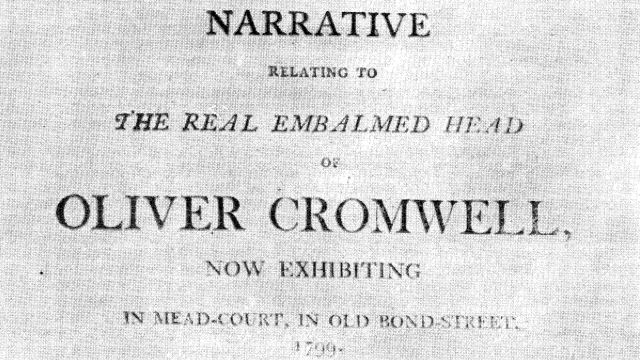
In 1841 Cromwell's head was bought by Josiah Henry Wilkinson. Cromwell's head then stayed in the family until 1960, when it is given to Sidney Sussex College which was Oliver Cromwell's old college.
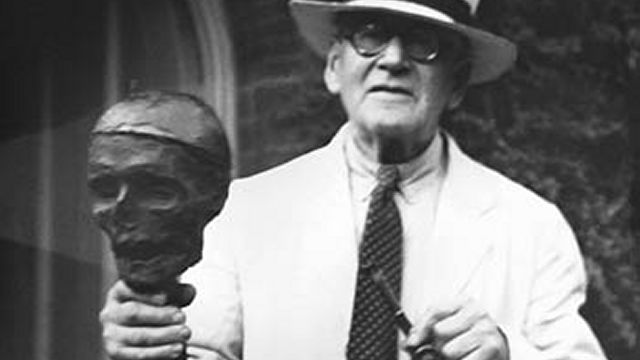
The End Of Our Tale |
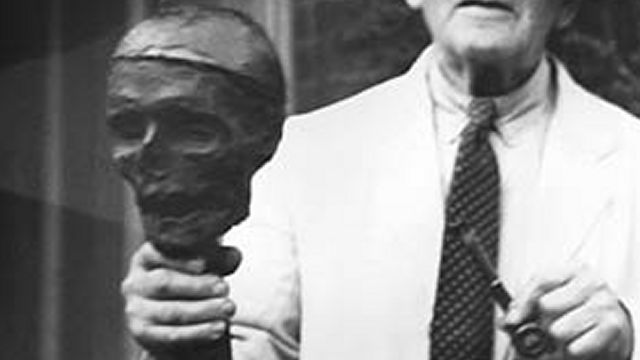
After some debate the college decided to bury the head, in a secret place, so Cromwell could finally rest in peace. A plaque close to the burial site commemorates the interment of Oliver Cromwell's head on 25 March 1960.
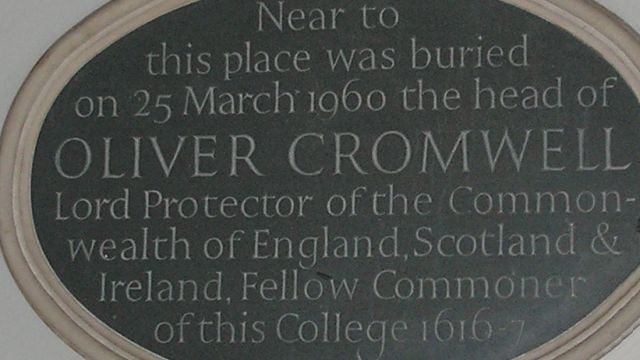
Thus ends our curious tale of Oliver Cromwell's head.
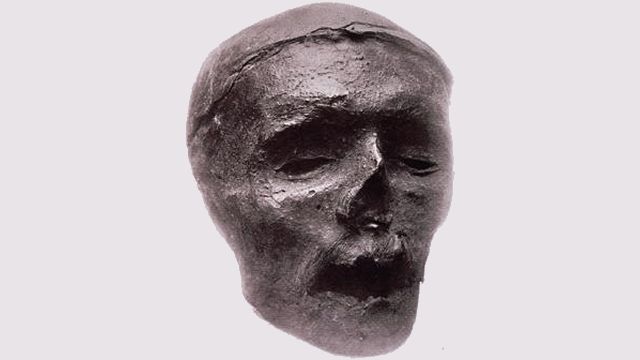
Cutting Room Floor |
Roundheads |
Today the Parliamentarians are often referred to as "roundheads". This term was in fact originally an insult. Many of the supporters of Parliament were Puritans who often wore their hair short.
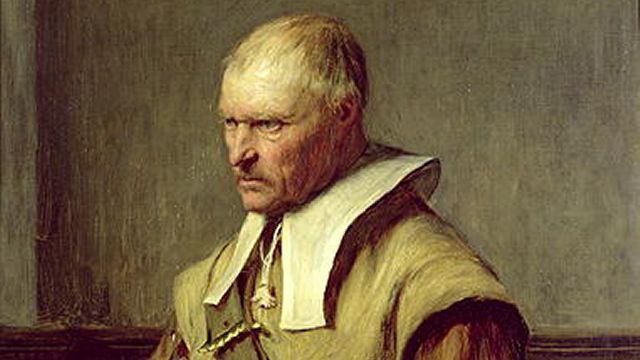
Cavaliers |
The Royalist forces are often referred to as cavaliers. The cavaliers generally dressed in courtly fashion. There long hair was worn in ringlets, clothes were brightly coloured with many trimmings, including lace collars and cuffs. Flamboyant hats were often worn.

Curious Facts |
Interesting Links |
General |